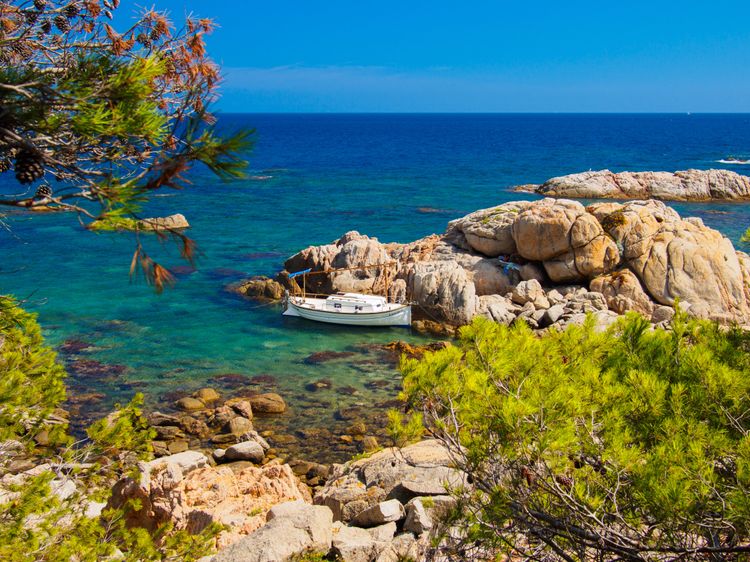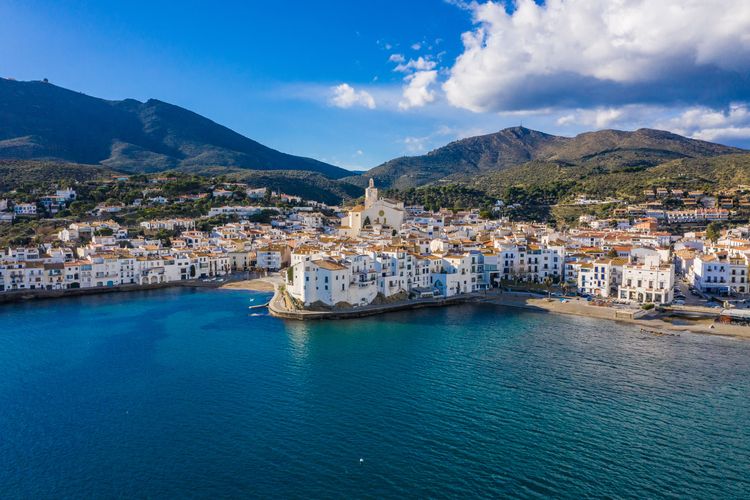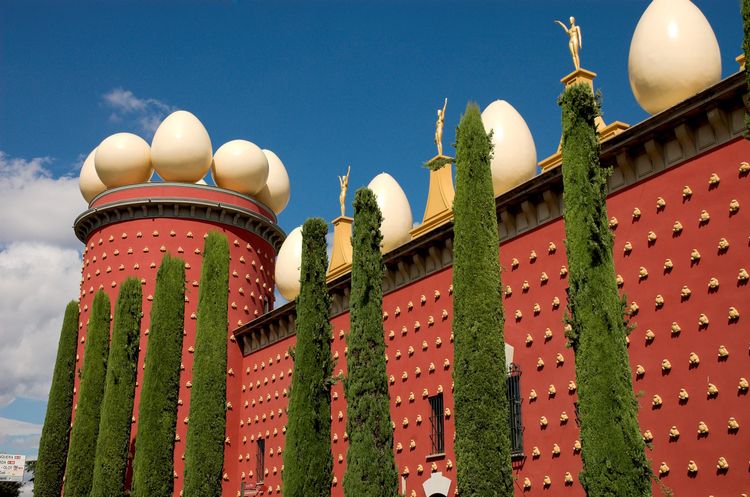Beyond the concrete, the many charms of the Catalan Côte Sauvage
Welcome to the Costa Brava
- © kavalenkava / Shutterstock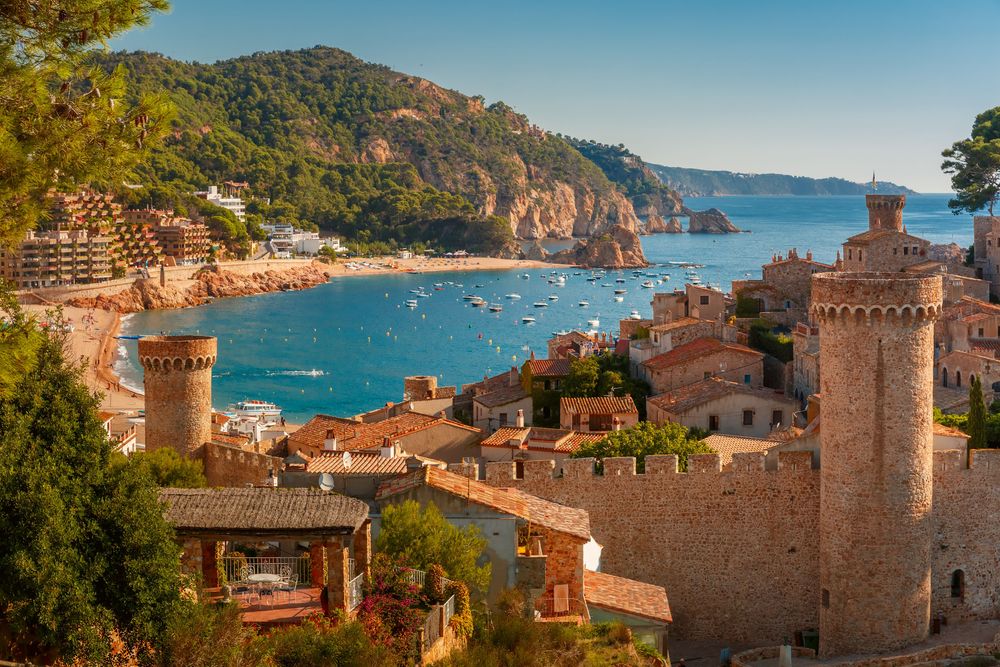
Who said the Costa Brava was too concrete? Forget those preconceived ideas, Spain's north-eastern coast and its hinterland are full of unspoilt natural beauty spots, ideal for satisfying those cravings for authentic travel. As popular with families as it is with groups of friends, the Costa Brava offers a wide range of activities that will appeal to the vast majority of travellers. From the most inquisitive to the most sporty, there's something for everyone. In fact, the region regularly features in rankings of the best tourist destinations. A distinction that's sure to tempt you.
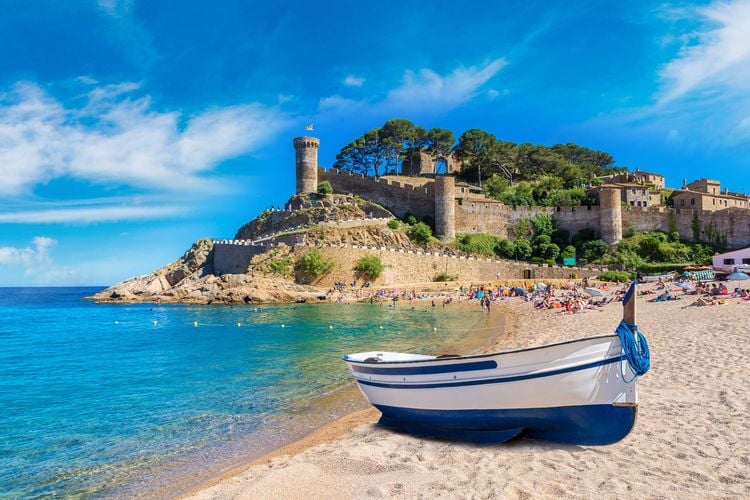
Beaches, nature parks, historical heritage, festivals and gastronomy, it goes without saying that the Costa Brava is a destination that appeals to everyone. It's a region that caters for all types of traveller: dreamers, the curious, gourmets and strollers... This paradise on the Iberian Peninsula is constantly being (re)discovered. Zoom in on the jewels of the Costa Brava!

The Costa Brava coastline, between beaches and hidden coves
- © Sergii Figurnyi / ShutterstockThe Costa Brava: the ideal destination for relaxing in the sun
Fans of idleness have found the ideal destination where they can bask for hours in the sunshine of the Costa Brava. With its Mediterranean flora lining the white sandy beaches, its turquoise waters and its hidden coves along the coastline, this region of Spain is ideal for enjoying summer by the water, with family, friends or alone. The spots of Lloret de Mar, Calella de Palafrugell and Begur are renowned for hosting the most beautiful beaches in the region.
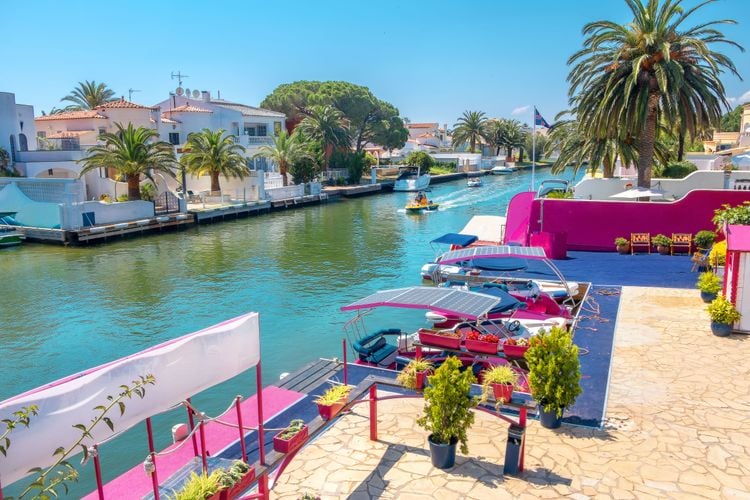
The natural landscapes of the Costa Brava
The Costa Brava is also renowned for its abundant flora and fauna, which hiking enthusiasts love to discover in the region's nature parks and countless footpaths.
With almost 14,000 hectares of land and sea, Cap de Creus is the best-known nature park in the area, stretching between Rosas and Cadaqués. On a soothing walk where you can come face-to-face with the flora of the Iberian Peninsula, walkers will discover the many cliffs and hidden coves of one of the most uninhabited areas of Spain.
And don't forget the Camí de Ronda, a superb coastal path over 200km long, making it possible to cover the whole of the Costa Brava on foot!
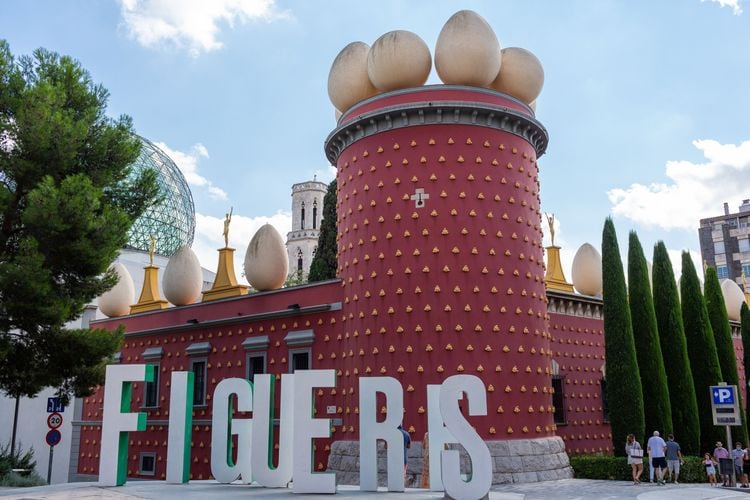
A cultural heritage influenced by Dalí
- © Sergio Rojo / ShutterstockHistorical and cultural monuments on the Costa Brava
The Costa Brava is famous for its countless historic buildings, veritable jewels from bygone days. Art and history buffs will be delighted to discover the fishing village of Port Lligat, not far from Cadaqués, where Dalí, Spain's most famous artist, lived with his wife.
Spending a few days in Figueres, where the artist is buried, is another key stop on a journey in Dalí's footsteps: it is here that you will find the Dalí Theatre-Museum, an emblematic cultural building in the region dedicated to the artist. But it's above all when you wander through the cobbled streets of Figueres that you feel the artistic influence: a visual spectacle that will take your breath away!

The Costa Brava, for your pleasure
- © Serhiy Stakhnyk / ShutterstockThe Costa Brava on your plate
The Costa Brava is also the ideal destination for food and wine lovers! One of the first things to do is to sit down on the terrace of a typical Catalan restaurant to sample the local specialities.
From meat to fish and seafood, there's something for everyone! On the menu are tasty tapas like the unmissable pan con tomate, or typical dishes based on roasted vegetables, rice, sweet onions from Figueres, anchovies from l'Escala and Rosas, cold meats and cheeses from the Pyrenees... All accompanied by a good red, white or rosé wine from the D.O. Empordà...
It's going to be a delicious holiday!
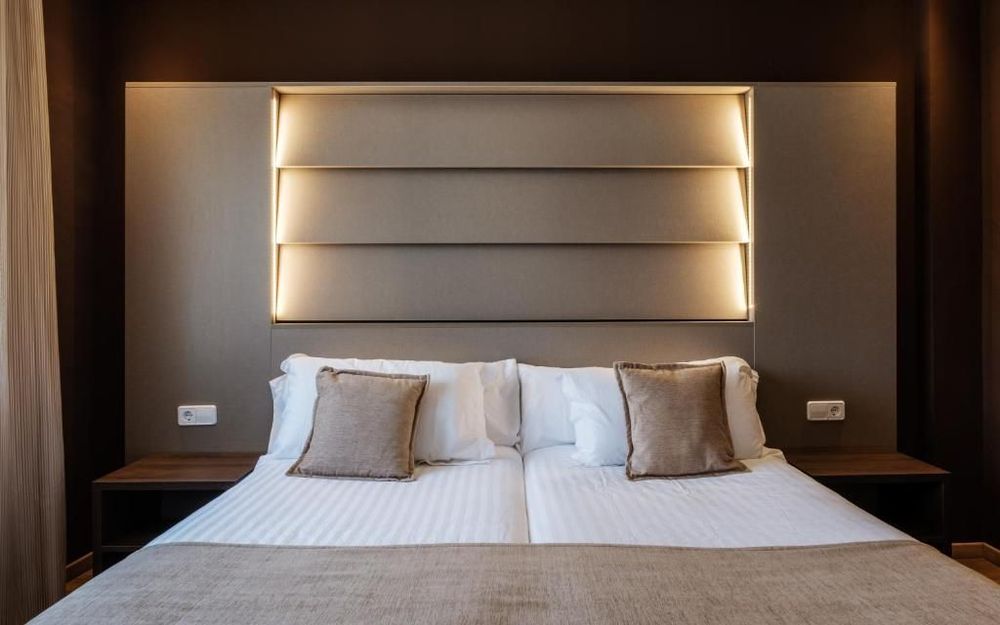 Costa Brava
Costa Brava
Windsor Hotel
You'll be able to stay in a beautiful establishment full of charm!Last articles
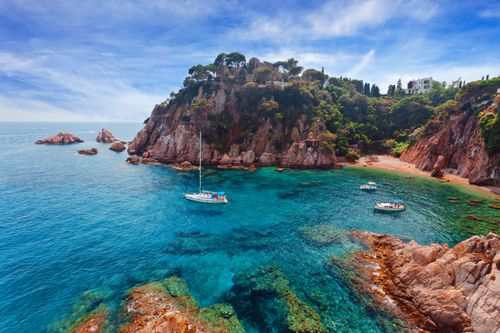
A week to sample all the charms of the Costa Brava
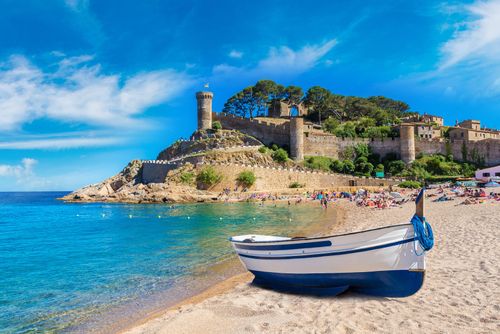
It's not all beaches on the Costa Brava
The must-sees
How to get there?
There are three ways to get to the Costa Brava:
By car:
The Costa Brava borders France, so it's a perfectly feasible trip by car. What's more, once you're there, having your own vehicle is a great way to explore the region.
By train:
A TGV line with numerous connections links Paris-Gare de Lyon to Barcelona, via Figueres and Girona: a short journey by scheduled bus or hire car is all you need to get to the coast.
By plane:
The easiest way to get to Barcelona is to choose from a wide range of flights from Paris, Beauvais, Bordeaux, Lyon, Nantes, Nice, Marseille, Strasbourg, or even Charleroi and Brussels. Once in Barcelona, you can take a train to Girona or Figueres, or travel by scheduled bus or hire a car locally.
Where to stay?
You'll be spoilt for choice on the Costa Brava. In the seaside resorts, hotels of all sizes and standards await you. Prices are generally affordable, but always book well in advance during the high summer season.
On the other hand, you'll find guesthouses, gîtes and bed-and-breakfasts just about everywhere, especially if you're leaving the coast to stay further inland.
There are also plenty of rental properties to choose from: a studio for two or a large flat, a house or even a villa with a shared swimming pool - the offer is as extensive as the number of visitors to the Costa Brava.
For those on a budget, there are youth hostels or hostels (dormitory beds), or you can pitch your tent in one of the many campsites on the Costa Brava.
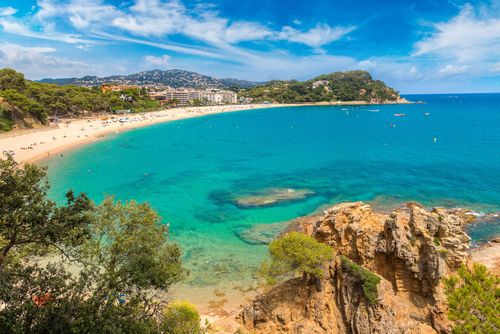
Practical information
When should you visit the Costa Brava?
- As is often the case with Mediterranean tourist destinations, summers are hot and lively, but also very crowded, with prices on the rise.
- Spring, from April-May, is a pleasant, calmer season, even if the sea is still cool. Ideal for outdoor activities.
- In autumn, from mid-September to October, the weather is mild and pleasant, and the summer madness subsides.
- In winter, the Costa Brava is a completely different place: worth a try, but beware of the possibility of bad weather and the many addresses that are closed.
How long should you spend on the Costa Brava?
At least a week, to give you time to relax and get into the swing of things.
What are the formalities?
None, we're in Spain, in the European Union and in the Schengen area: all you need is an identity card or passport.
Local transport:
By car, you'll have plenty of scope for exploring the Costa Brava: the roads are generally good.
If you don't have a car, you can make do with the local bus network, which is fairly comprehensive, and the trains run by RENFE, the Spanish rail company (Barcelona-Gerona-Figueres line in particular).
Costa Brava: what to eat?
Plenty! The local cuisine relies heavily on fresh vegetables such as tomatoes, aubergines and peppers, as well as bread, pasta, beans, pork, goat's cheese and many types of fish.
You should try gamba de Palamos (prawns), jamón ibérico (Iberian ham), mussels, manchego cheese, monkfish, sardines, berberechos (cockles) as an aperitif with a drizzle of wine vinegar, sars royal a la plancha (typical cooking method), tassergal, anchovies AOC and anchoïade, fideuà, which resembles paella but with noodles instead of rice, and of course crème catalane.
Costa Brava: where to eat?
Whether you're into fine dining or casual dining, you'll find plenty of options, from a host of renowned chefs to family-run restaurants and market fare.
El Celler de Can Roca, located in Girona, is a gourmet stop not to be missed: this 3-star MICHELIN restaurant is the best on the Costa Brava.
Costa Brava: what to bring back?
Capes, the typical pastries of Cadaquès, will delight gourmets, while good-quality Emporia wines are generally available at very affordable prices.
Anchovies from L'Escala and Rosas, with their registered designation of origin, and olives stuffed with anchovies are great Costa Brava specialities.
Vigatanes (pronounced 'bigatanes'), the Catalan espadrilles used to dance the traditional sardana, will delight fashion victims.
Things to avoid:
Criticising Catalan won't help you make friends. Don't be offended if the people you meet first speak to you in Catalan. It's the native language of the locals, so it's not surprising that they naturally express themselves in it.
Catalans are very proud of their language and want to practise it whenever they can. If you don't understand it, a simple "bon día" will do the trick: just being aware that Spanish can be an effort for them will put them in a good mood towards you.
Avoid telling them that you don't understand this particularity, as they will politely but firmly reply that Spanish is a language imposed on them by the state, whereas Catalan is the language of their ancestors. The animosities between Catalans and Spaniards (from Madrid or Andalusia) are still very much alive, so there's no need to fan the flames of conflict.
The Costa Brava is an ideal region for practising sports in the great outdoors. The plains of the Empordà are ideal for cycling, while the windy coasts of Lloret and Tossa del Mar benefit from the famous tramontana, which will delight fans of board sports such as kitesurfing and windsurfing. Finally, on sunny days, when the wind dies down, you can go water skiing or jet-skiing.
explore Try out our comparators
It is Easy to travel




